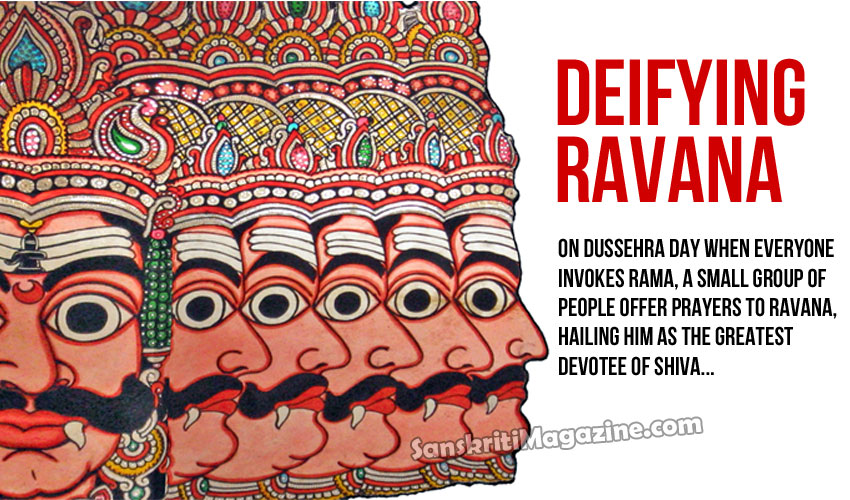On Dussehra day when everyone invokes Rama, a small group of people offer prayers to Ravana, hailing him as the greatest devotee of Shiva.
All through my growing up years, I was fed stories of how Ravana qualified to be the biggest evil-doer on earth. Every year, my parents took me to the Ramlila Ground in Delhi to witness effigies of Ravana and his brothers go up in flames. As the effigies fell down, shouts of Jai Sri Ram would rent the air. Everytime, we played pranks which the grown-ups thought were devilish, we were admonished for “behaving like Ravana”. Therefore, I was surprised to hear that there are temples dedicated to the demon king in Uttar Pradesh, Madhya Pradesh and Rajasthan. These extoll him as a great scholar and as the greatest devotee of Shiva.
During Navaratri, the Chhinnamastika Devi Temple in Kanpur brims over with devotees. On Ashtami day, the temple premises throb with feminine energy as little girls gather there to take part in kanya-puja. Just outside the temple is a small shrine, the doors of which always remain closed. On enquiry, I was told that it was the Dashanan Mandir dedicated to Ravana. He was believed to be the guard of Goddess Chhinnamastika and the five-feet idol of the Lankan king stands outside the temple to protect the deity.
The Dashanan temple was built by King Shiv Shankar over a century ago. Ravana’s devotees see him as a dedicated Shiva bhakta and as the epitome of knowledge and valour. They also worship Rama and Sita; however, they are opposed to the burning of Ravana’s effigy.
The shrine doors are opened only on Dussehra. The idol of Ravana is decorated with ornaments and aarti is offered by devotees. The metaphorical interpretation is that the ten heads of Ravana represent his knowledge about the six upanishads and four vedas. At a clearing near the shrine, I saw three clay faces on the ground, where some people were offering flowers.
A priest at the Kali temple said the clay faces – representing Ravana, his brothers Kumbhakarna and his son Meghnad – are taken to the nearby Ramlila ground. “Since Ravana did not put his knowledge to good use, the clay faces are plastered on the effigies and burnt in the evening. The act symbolises that education without wisdom is useless,” he said. Once the effigy of Ravana is consigned to the flames in the evening, the doors of the temple are closed – only to be opened during the next Dussehra. An ardent devotee of Shiva, Ravana is credited with composing the vibrant Shiva Tandava Stotra. Ravana reportedly sang the shloka to the accompaniment of Ravanahatha, a bowed fiddle that he’d created.
In the town of Mandore near Jodhpur, Ravana is hailed as son-in-law by Namdeo Vaishnav Samaj, a sect which believes that Ravana’s wife Mandodari belonged to the town. There is a mandap (altar or pavilion) where Ravana is said to have married Mandodari, and which the local people call Ravan Ki Chanwari. The Maudgil Brahmins of Jodhpur claim to be the descendants of Ravana. They say that their ancestors have been performing the shradh, or annual death ceremony of Ravana on Dussehra day every year. They offer pind daan and bathe after the ritual. There is a large Shiva lingam in Kakinada, Andhra Pradesh, supposedly installed by Ravana himself, with a statue of Ravana nearby. Both the lingam and Ravana are worshipped by the fishermen community there.
In Ravangram, a small village in Nateran tehsil, Vidisha district, Madhya Pradesh, people worship an ancient 10-foot idol of Ravana in a reclining position. Ravana is personified as a symbol of prosperity and regarded as saviour by some brahmin sub-sects. Daily worship includes offering bhog of kheer and puri.
~ Ranjeni A. Singh










